Cane begonias are one of the easiest types to grow, making them perfect for beginners. They have upright stems, often resembling bamboo, and produce beautiful spotted leaves and clusters of flowers. Their low-maintenance nature and adaptability make them ideal for indoor and outdoor spaces. Here are 20 stunning cane begonias to consider.
Contents
- 1 Begonia Maculata
- 2 Begonia ‘Lucerna’
- 3 Begonia ‘Sophia’
- 4 Begonia ‘Benigo Pink’
- 5 Begonia ‘Cracklin’ Rosie’
- 6 Begonia ‘Silver Spot’
- 7 Begonia ‘Brazilian Lady’
- 8 Begonia ‘Miss Mummy’
- 9 Begonia ‘Torch’
- 10 Begonia ‘Flamingo Queen’
- 11 Begonia ‘Benitochiba’
- 12 Begonia U062
- 13 Begonia ‘White Ice’
- 14 Begonia Thurstonii
- 15 Begonia albopicta
- 16 Begonia ‘Sinbad’
- 17 Begonia Elsa
- 18 Begonia ‘Tiki Carmen’
- 19 Begonia ‘My Special Angel’
- 20 Begonia malachosticta
Begonia Maculata
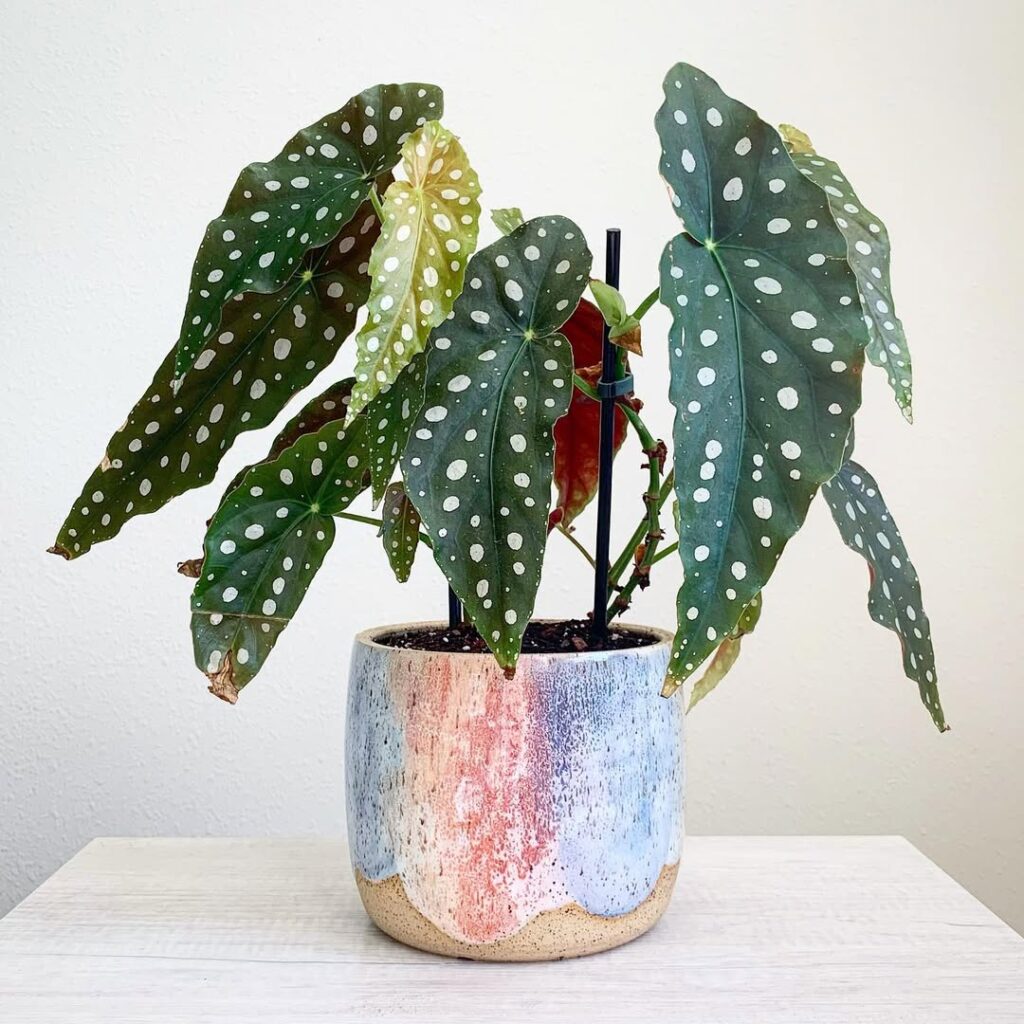
Begonia Maculata, also known as the Polka Dot Begonia, is a striking cane begonia with elongated dark green leaves adorned with silvery-white spots. The undersides of the leaves are a rich red, adding to its dramatic visual appeal. This variety produces clusters of white or pink flowers with yellow centers, blooming on single stems. It thrives in bright, indirect light, requires moderate watering, and enjoys high humidity.
Begonia ‘Lucerna’
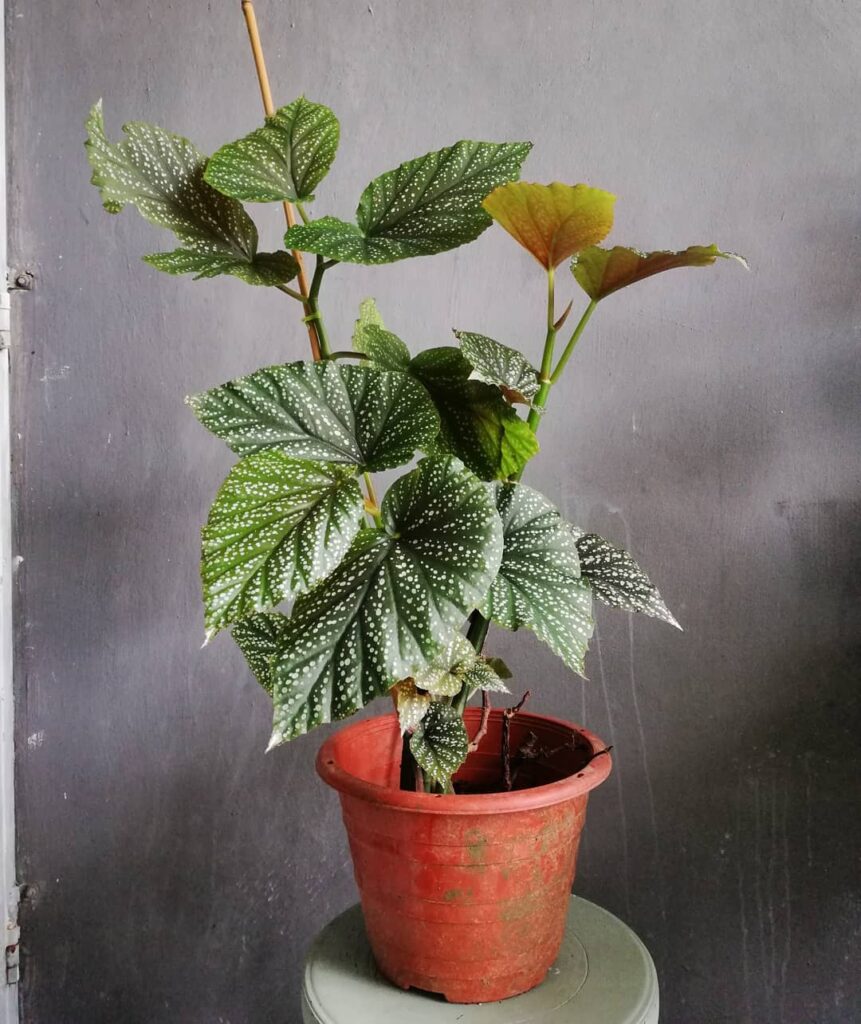
Begonia ‘Lucerna’ features silvery-spotted leaves and profuse pink flowers that bloom throughout the year. It is fast-growing, tolerates varied light conditions, and requires minimal maintenance, making it perfect for beginners.
Begonia ‘Sophia’

Begonia ‘Sophia’ is a bushy cane begonia with deep green leaves and soft pink blooms. It is low-maintenance, thrives in moderate humidity, and requires minimal pruning to maintain its shape.
Begonia ‘Benigo Pink’
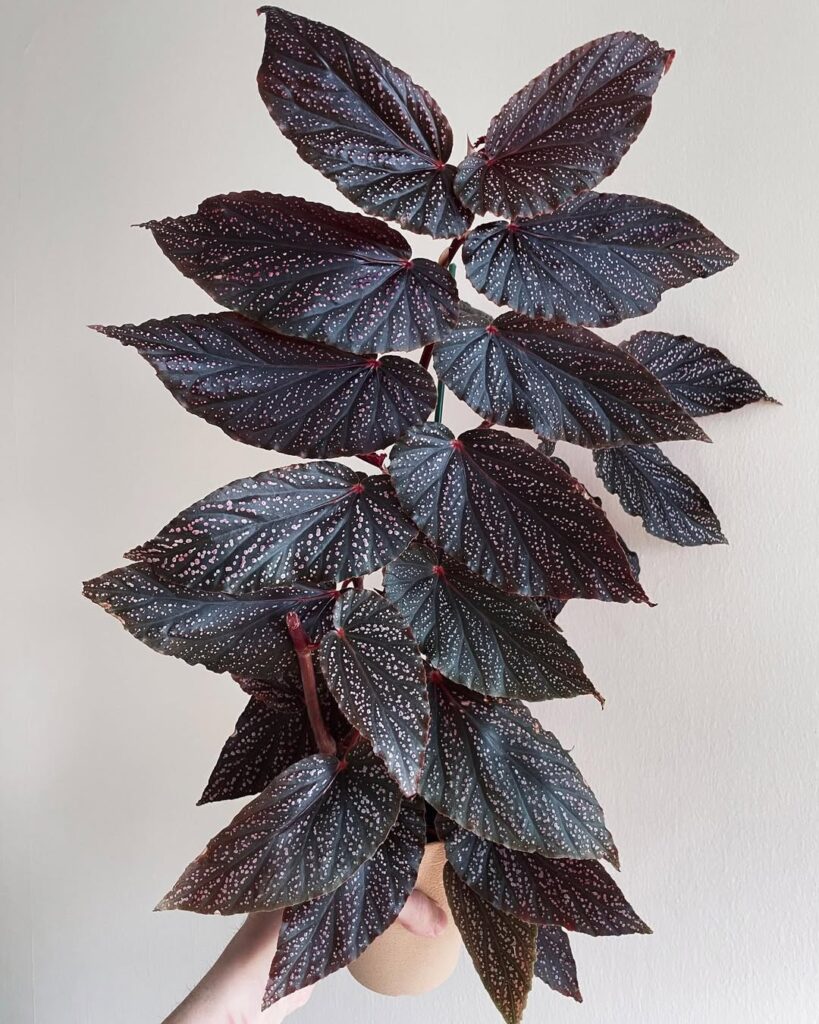
Begonia ‘Benigo Pink’ is a medium cane-type begonia with an upright, bushy growth habit. It features reddish-green leaves with silver spots and red undersides, along with clusters of pink flowers at the branch tips. It thrives in well-drained, humus-rich soil and requires moderate watering.
Begonia ‘Cracklin’ Rosie’

Begonia ‘Cracklin’ Rosie’ is an upright cane-like begonia. It has large, bronze-colored leaves when young, which mature into dark green foliage with silver dots. The undersides of the leaves are red, and they naturally curl, revealing the color contrast. While it does not bloom frequently, when it does, it produces large clusters of pink flowers.
Begonia ‘Silver Spot’
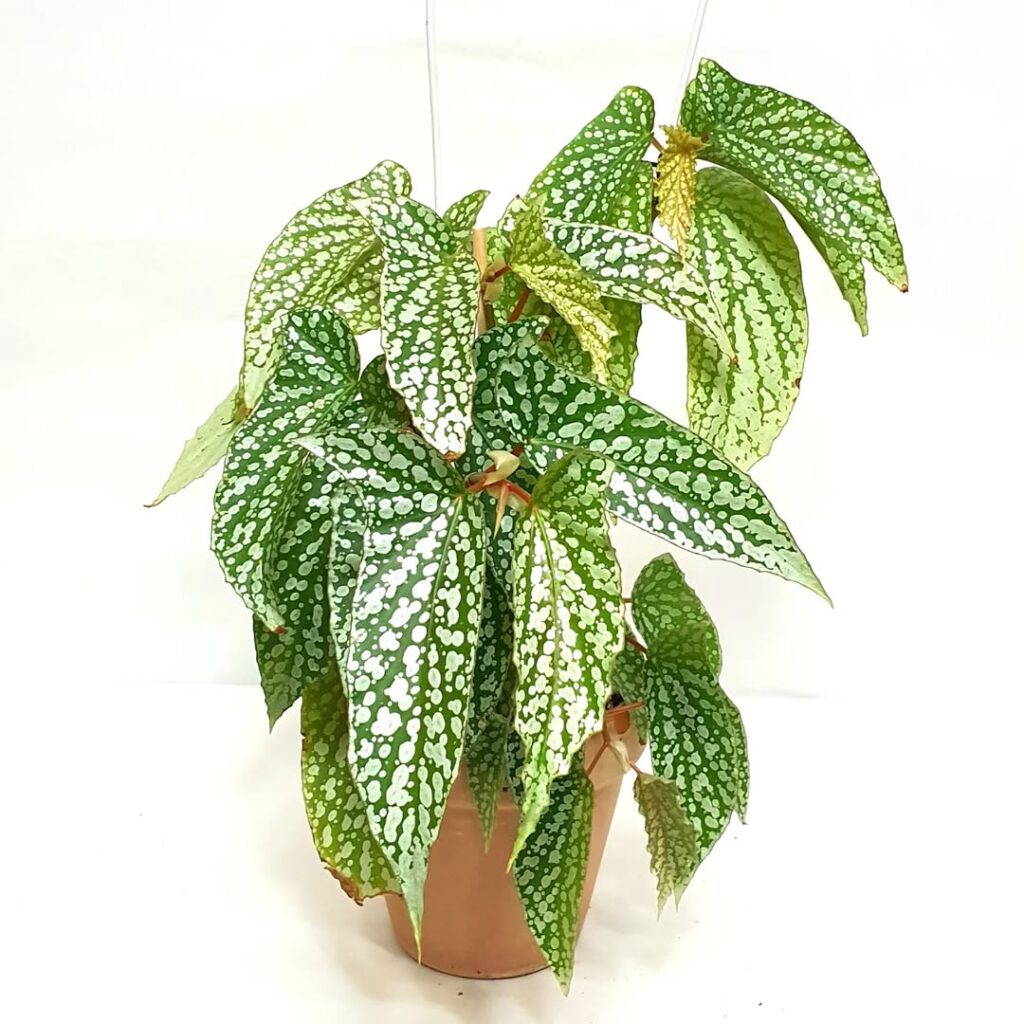
Begonia ‘Silver Spot’ is a cane begonia. It has elongated dark green leaves with silver polka dots, and its upright growth habit resembles bamboo-like stems. This variety produces dangling clusters of white flowers and thrives in bright, indirect light with moderate watering.
Begonia ‘Brazilian Lady’
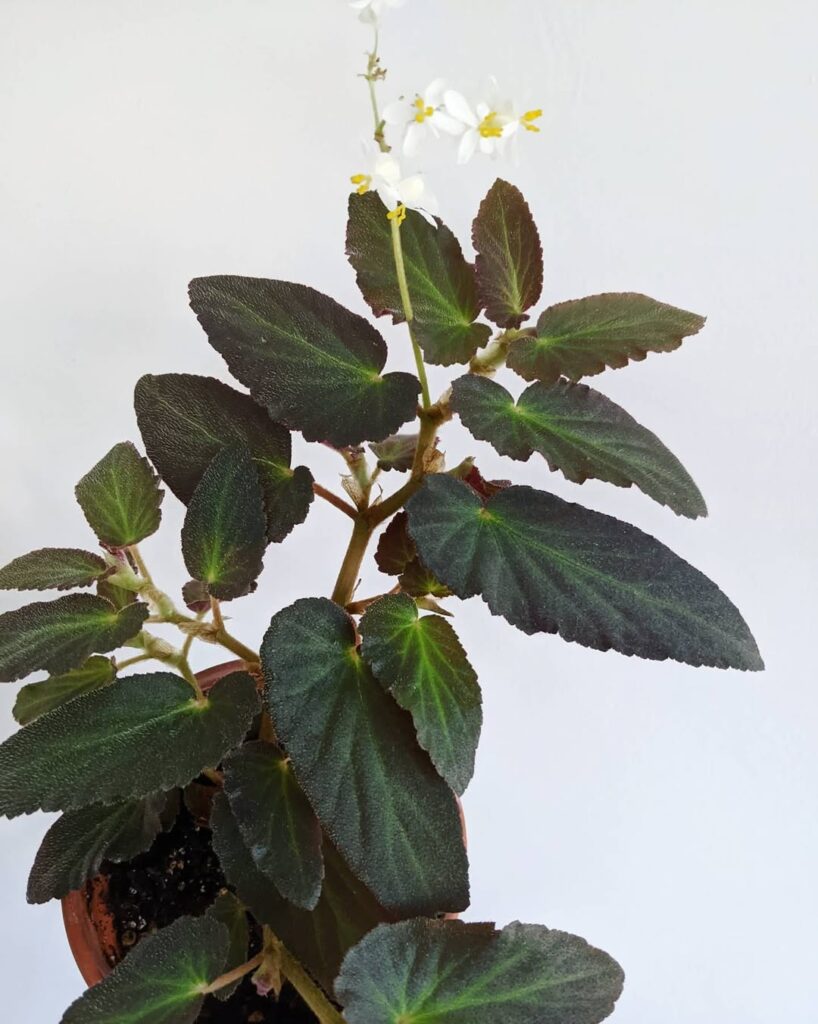
Begonia ‘Brazilian Lady’ has tall, upright stems, silvery-spotted leaves, and clusters of white flowers. This variety thrives in bright, indirect light and prefers moderate watering to maintain its lush growth.
Begonia ‘Miss Mummy’

Begonia ‘Miss Mummy’ has broad, glossy leaves with silver speckles and soft pink blooms. It is low-maintenance, thrives in bright, indirect light, and requires minimal pruning.
Begonia ‘Torch’
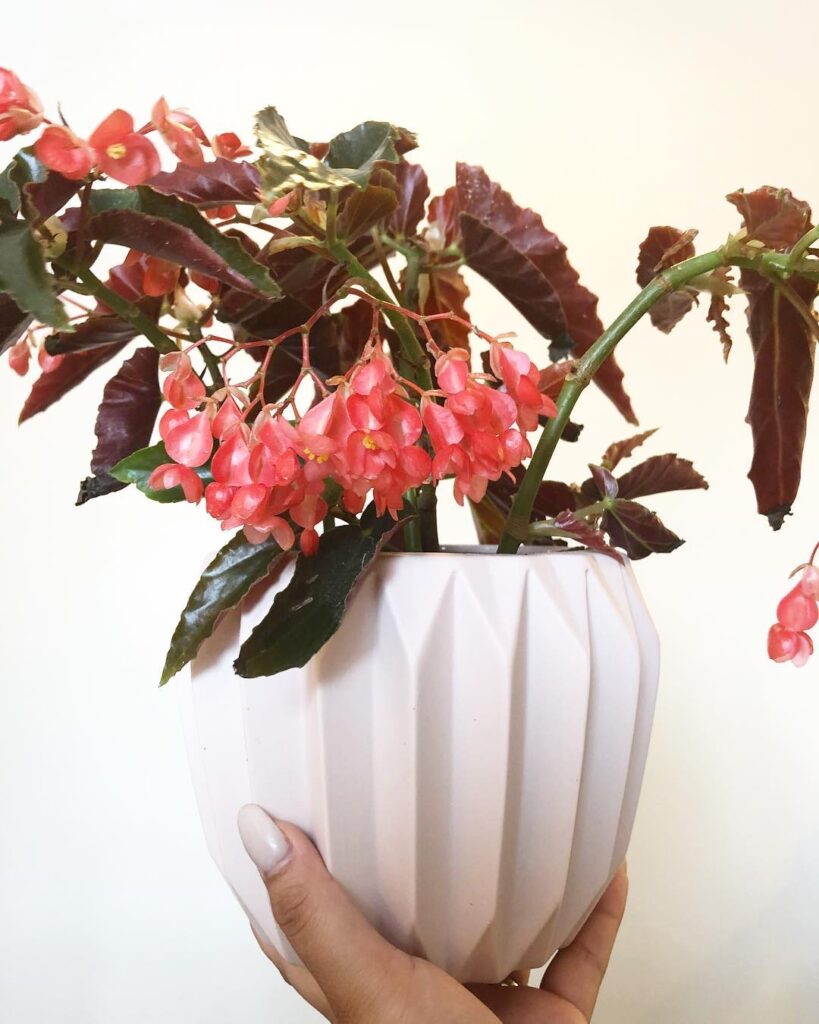
Begonia ‘Torch’ is a compact cane begonia with narrow, pointed leaves and bright red flowers. It is easy to grow, tolerates low humidity, and thrives in moderate light conditions.
Begonia ‘Flamingo Queen’
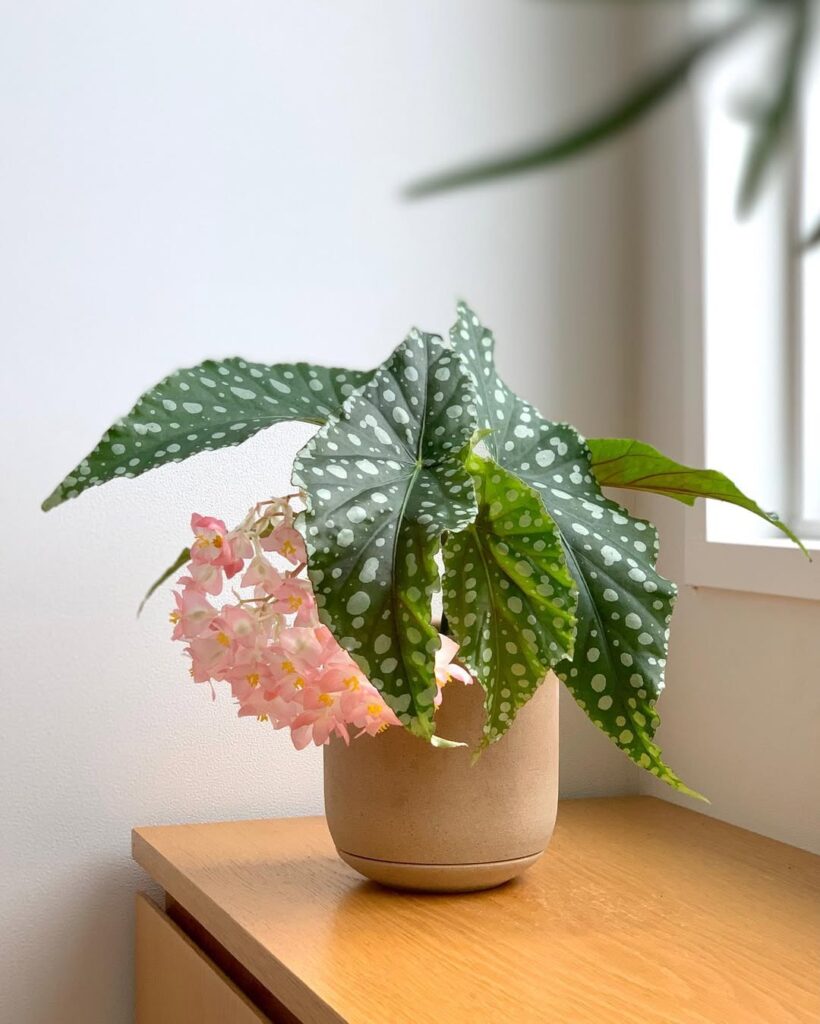
Begonia ‘Flamingo Queen’ features large, spotted leaves and clusters of pink flowers. It is fast-growing, requires minimal watering, and adapts well to indoor spaces.
Begonia ‘Benitochiba’
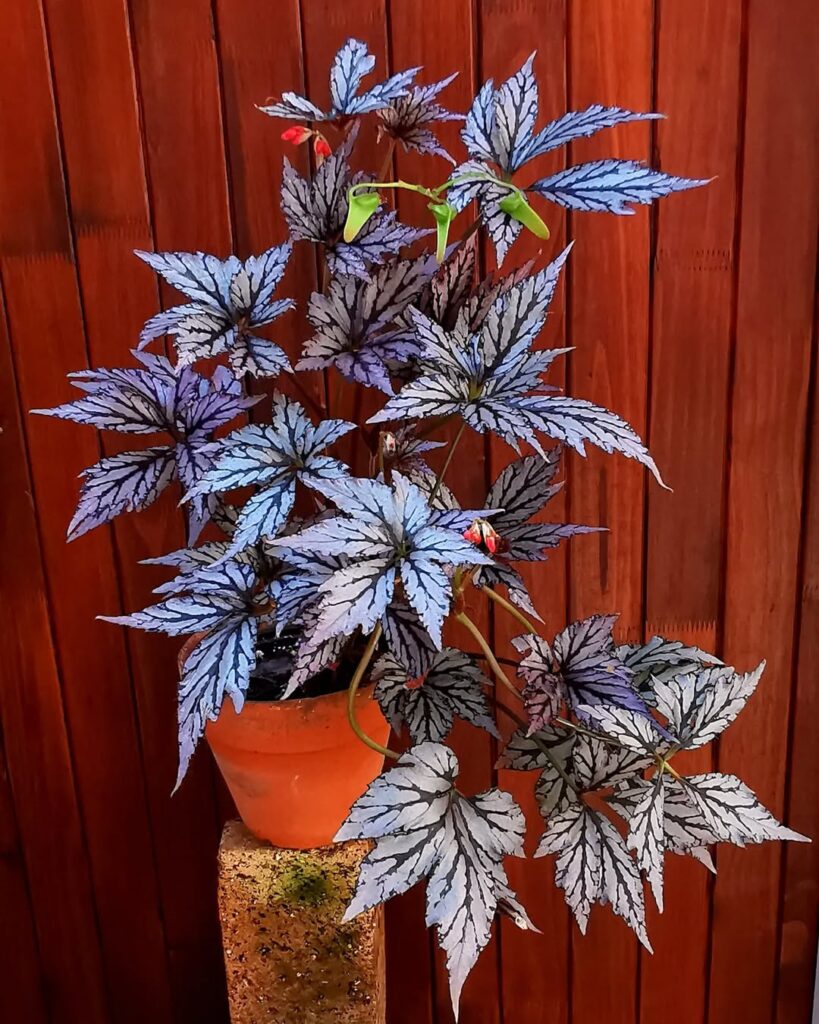
Begonia ‘Benitochiba’ is a stunning cane-type hybrid developed in Japan from a cross between Begonia ‘Filigree’, a rex-cultorum variety, and Begonia luxurians, a tall-growing cane species from Brazil. This cross blends the bold coloration of the rex parent with the palmate leaf structure and upright growth of the cane parent, creating a fast-growing, hardy specimen with a silvery-purple sheen to its leaves. Its bright pink flowers contrast beautifully against the textured foliage, making it a striking addition to any begonia collection.
Begonia U062

Begonia U062 is a rare cultivar often confused with Begonia Maurice Amey, but it has slightly textured, hairy leaves that set it apart. Its foliage changes color depending on light exposure, ranging from intense red to silver, creating a dynamic visual effect. This shrubby begonia is resistant to relatively low humidity (around 60%), making it more adaptable than some other begonias.
Begonia ‘White Ice’
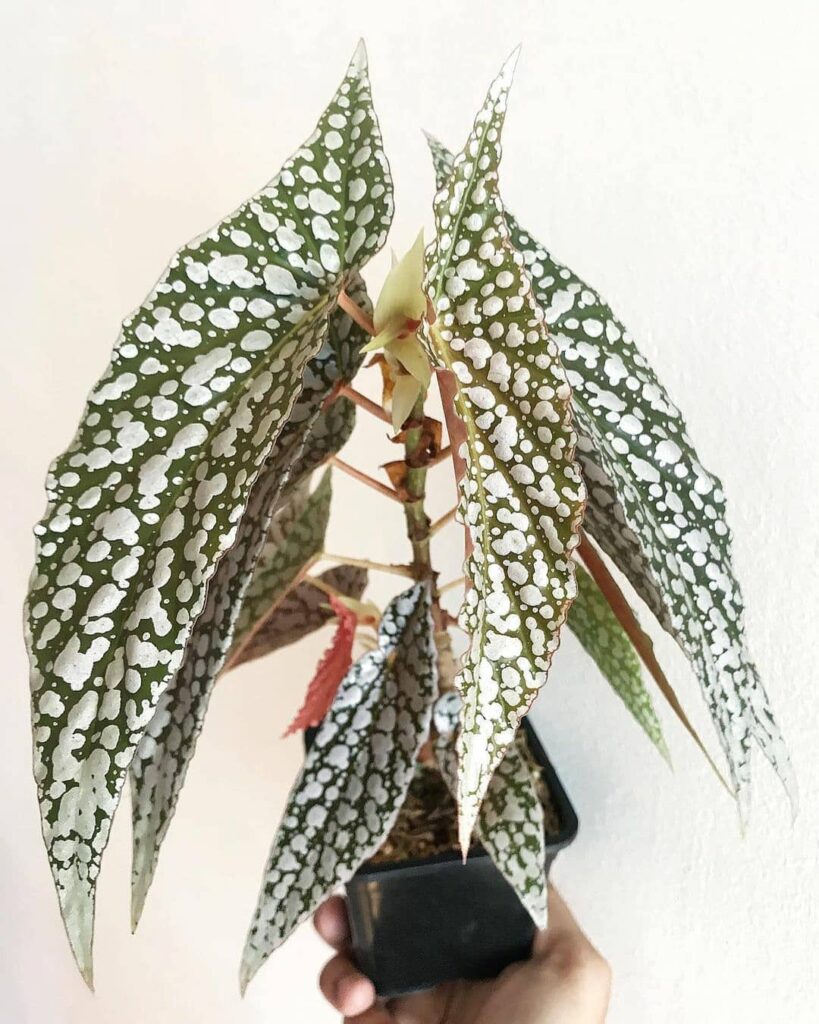
Begonia ‘White Ice’ is a striking ornamental begonia known for its elongated, pointed leaves adorned with white spots on a deep green background. This variety thrives in bright, indirect light, requires moderate watering, and enjoys high humidity to maintain its lush appearance.
Begonia Thurstonii
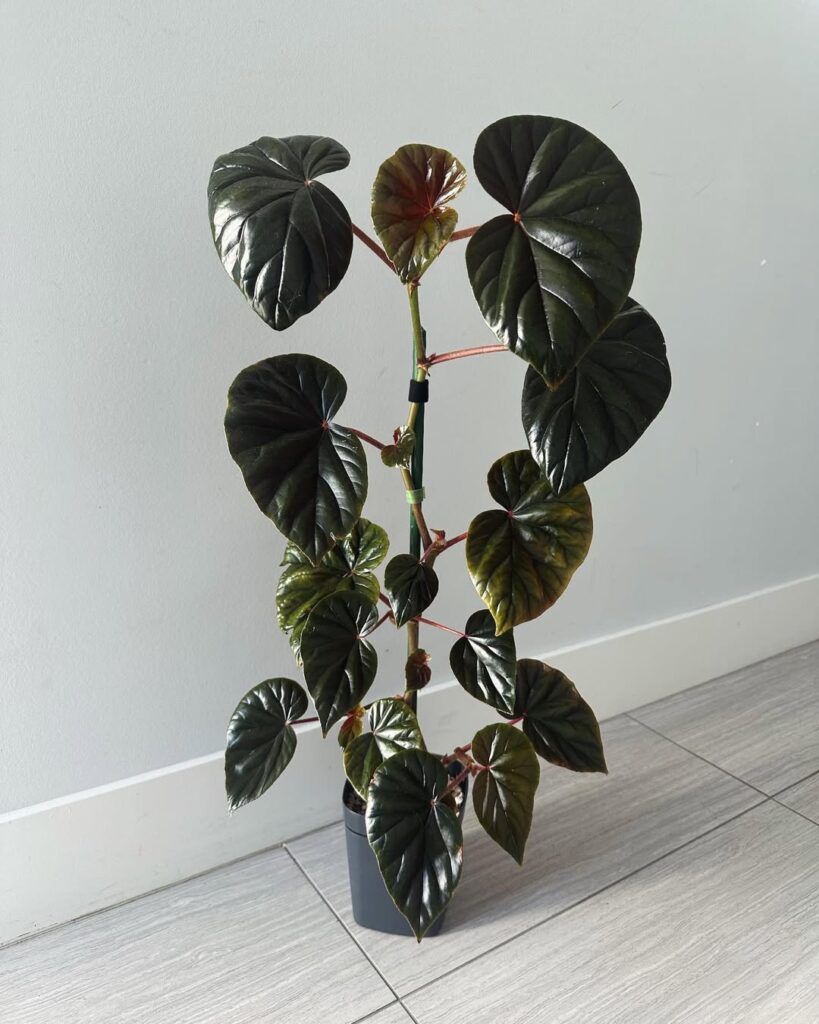
Begonia Thurstonii is a shrubby begonia that can grow up to one meter in height. It features large, glossy, dark green leaves with a heart-like shape and prominent veins. The undersides of the leaves have a reddish tint, adding to its ornamental appeal. The plant produces clusters of pink flowers, typically blooming in summer.
Begonia albopicta
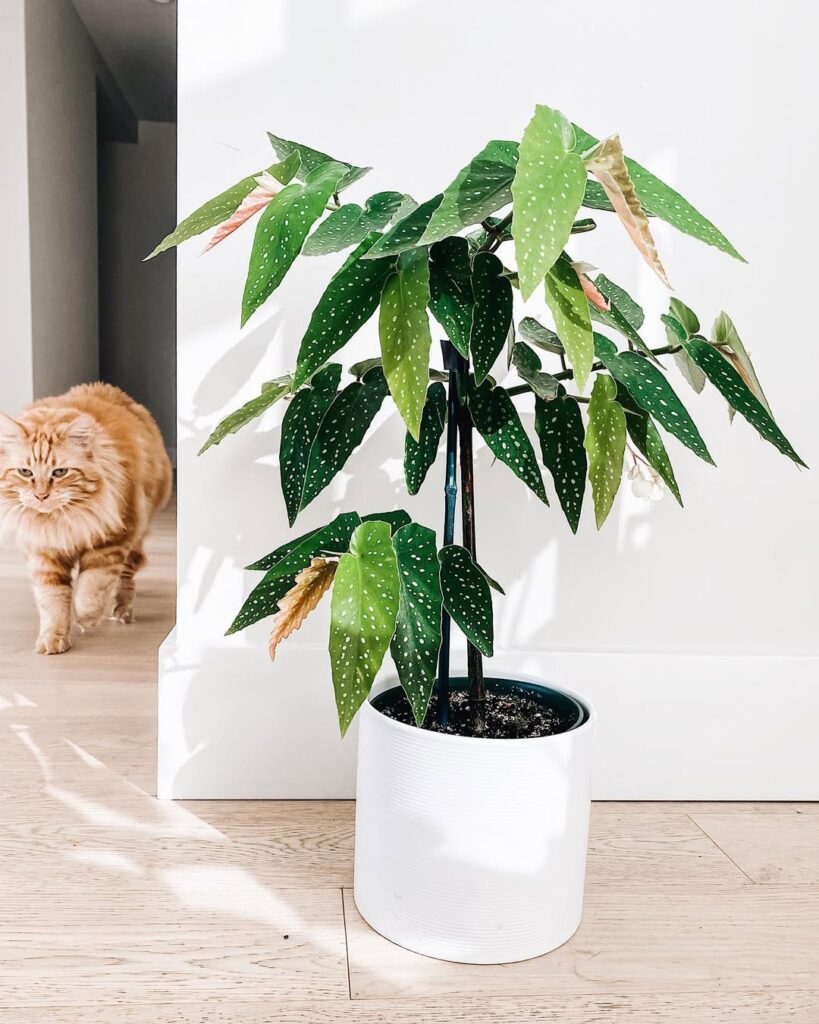
Begonia Albopicta, also known as the Spotted Angel Wing Begonia, is a cane-type begonia with elongated, deep green leaves adorned with silvery-white spots. As the leaves mature, the spots become larger and more numerous, creating a starry night effect. This variety produces clusters of delicate pink to white flowers, adding to its ornamental appeal.
Begonia ‘Sinbad’
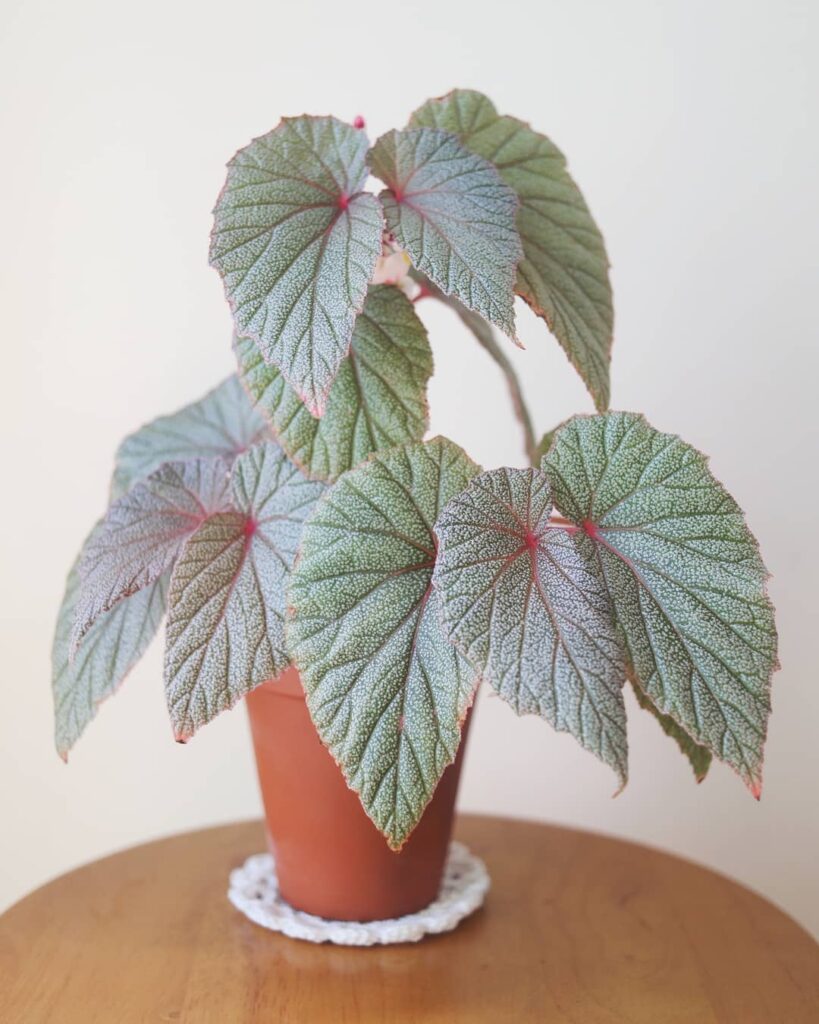
Begonia ‘Sinbad’ is a cane-like hybrid with silvery-green leaves that have a slightly pink and bronze tint when young. As the foliage matures, it develops a soft metallic sheen, making it a visually striking plant. This variety produces loose, pendant clusters of small pink flowers, blooming seasonally. It was developed as a cross between Begonia dipetala and Begonia U062, combining the thick-stemmed structure of its parent species with ornamental foliage.
Begonia Elsa
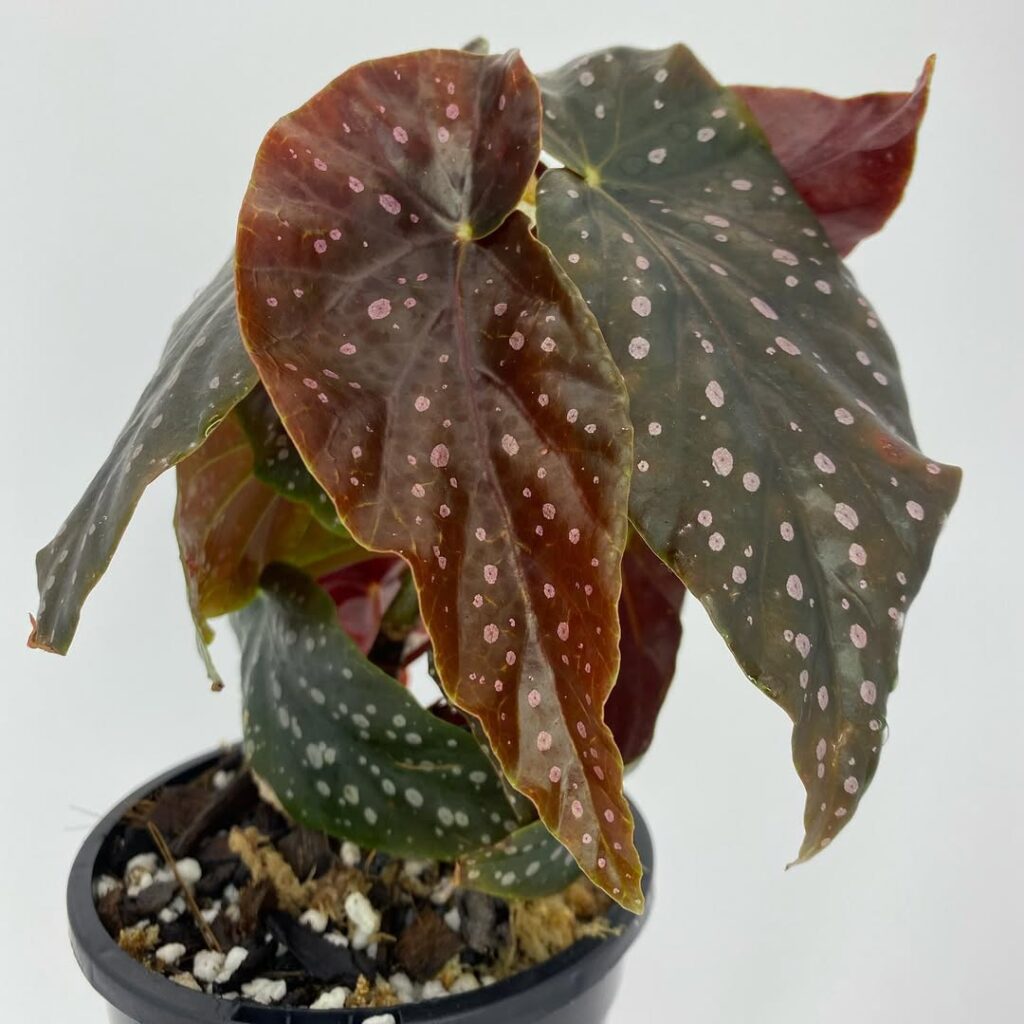
Begonia ‘Elsa’ is a cane-like hybrid developed by Lyla Kilpatrick in Western Australia, originating from a cross between Begonia ‘Lenore Olivier’ and Begonia maculata. It features large, almost black leaves with faint silver spots and deep blood-red undersides, creating a striking contrast. With foliage reaching up to 12–14 inches long, it has an upright growth habit and produces delicate pink to blush-colored flowers. Thriving in bright, indirect light, it prefers moderate humidity and well-draining soil to support its vigorous growth.
Begonia ‘Tiki Carmen’
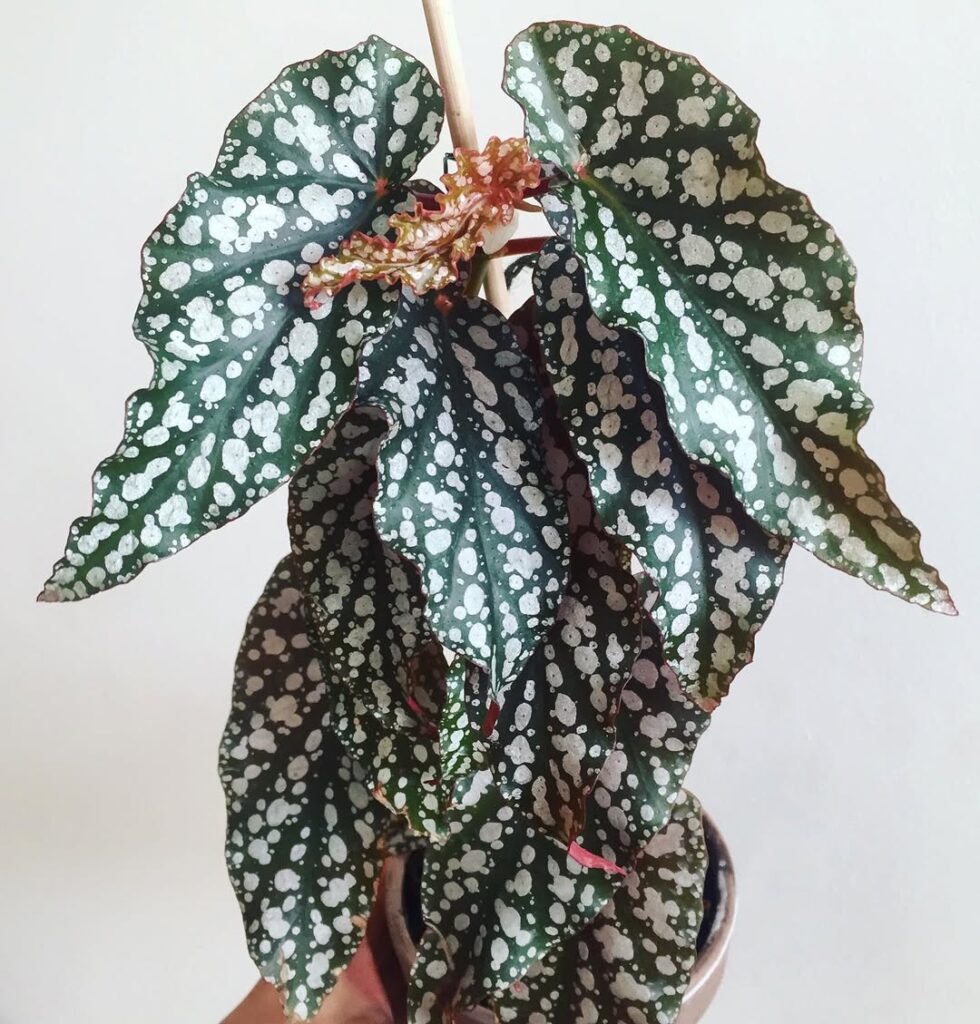
Begonia ‘Tiki Carmen’ is a cane-type hybrid with an upright, bushy growth habit. It belongs to the white-dot begonia group, featuring oval, deep green leaves with silver spots and slightly irregular edges. The undersides of the leaves and stems are intense red, adding to its striking appearance. It produces small, clustered pink flowers and is prized for its resilience and ornamental appeal.
Begonia ‘My Special Angel’
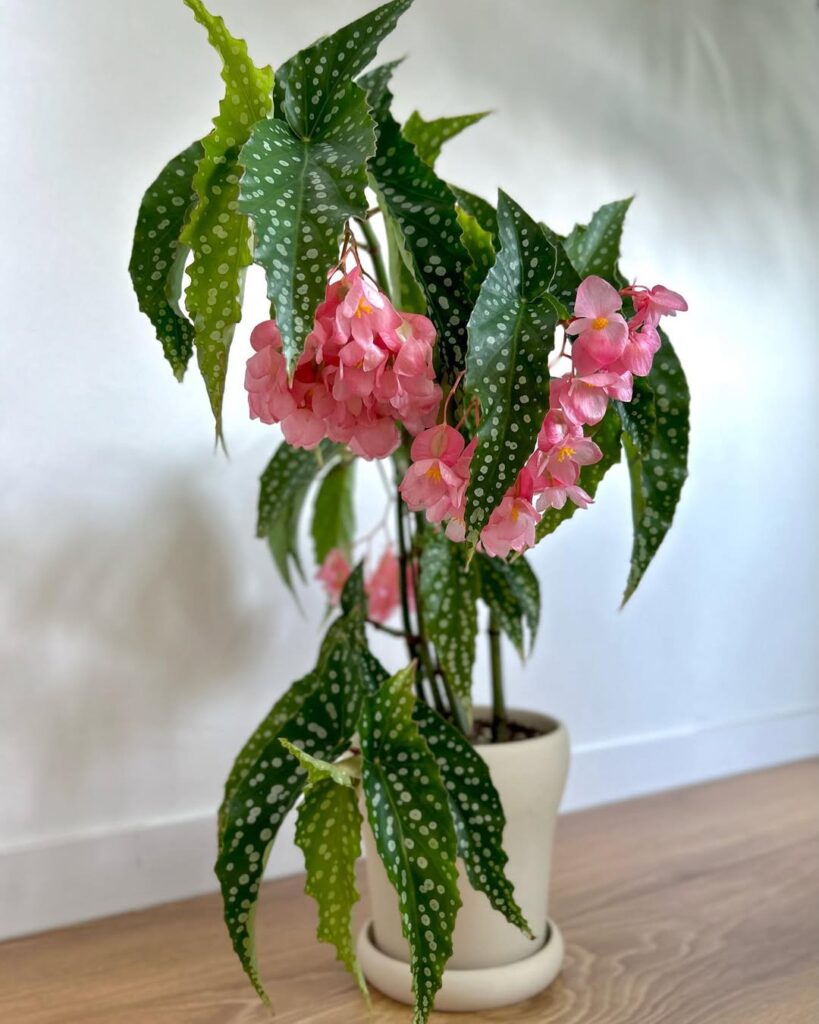
Begonia ‘My Special Angel’ is a cane-type Angel Wing begonia that is often mistaken for the ever-popular Begonia maculata. However, it features more pronounced spotting on its leaves and lacks the distinctive red underside seen in B. maculata. It has elongated, bright green foliage covered in white spots, resembling angel wings, and produces clusters of soft pink flowers.
Begonia malachosticta
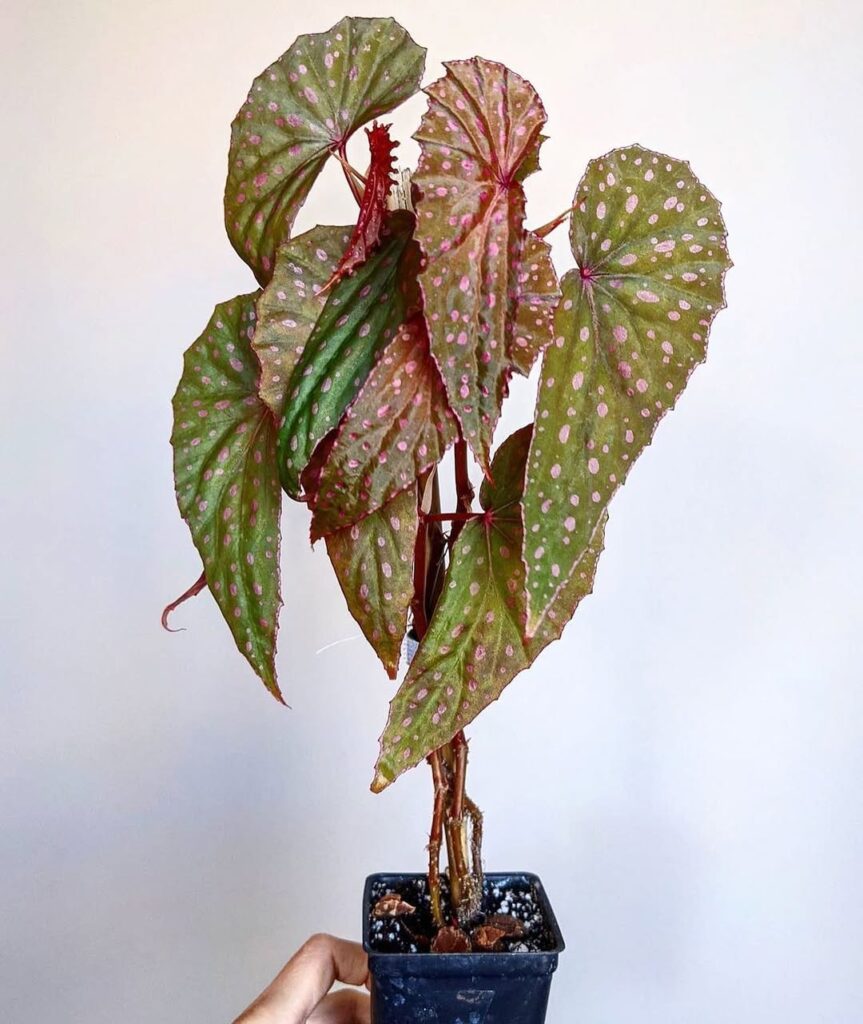
Begonia malachosticta is a cane or Angel Wing begonia with an upright growth habit, typically reaching 12 to 18 inches tall. Its deep green leaves are adorned with pink spots, and younger foliage has a light reddish tone. The stems and leaf petioles are red, and its flowers are somewhat inconspicuous, often hiding beneath the foliage.
